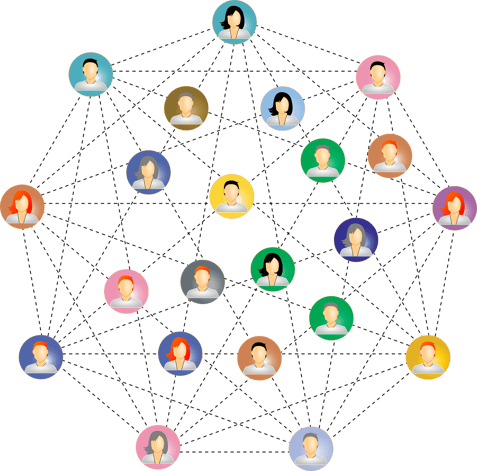Our change management consultants are often brought in on "mission-critical" strategic initiatives that are high risk, and must be implemented to full value realization. One of the missing pieces we see is that there is no explicit "change architecture" for getting the project implemented. This change architecture includes the identification and development of change Super Users. These Super Users are key to building change readiness in all the areas impacted by the change. 
Structure is important!
These Super Users are especially important in global organizations with far-flung Change Agents who need ongoing coaching and support in change management principles, strategies and tactics. These Super Users are really expert Change Agents who can provide mentoring and coaching to other Agents.
It's always surprising that organizations will ask people to serve as Change Agents without any skill development in what is required, without clear definition of roles and responsibilities, and without ongoing guidance and support!
The project team should know who these people are, where they are located, what they need to do, and how they can ensure they wil have the required skills.
A little investment in training these individuals will have a huge payoff in better resistance management, increased local Sponsorship, sustained adoption of the change, etc.
Super User Skills, Traits, and Characteristics
Just because someone is an expert in a new system or process doesn't make that individual a good Change Agent, and most certainly not an effective Super User. This is a role that requires specific talents and personal traits, and enthusiasm for the role.
Here are some specifics that we look for in assessing potential change Super Users who will be using the Accelerating Implementation Methodology (AIM) as the foundation for their role. The individual:
- Is well respected and trusted by all levels
- Has a proven track record of success
- Has strong communication skills
- Is viewed as a leader
- Has the ability to influence others and has demonstrated this ability
- Is able to coach others (provides constructive feedback)
- Has demonstrated a strong understanding of AIM change management principles
- Understands and values both the human and business sides of change
- Has a successful history of working well with others
- Has no major political liabilities
- Has enthusiasm for AIM as it relates to your organization, and sees the value it brings
- Has presentation skills
- Has good understanding of the organization
The more localized expertise you can set up as part of your change structure, the better off you will be. Remember that the success of your change depends on local Agents and Sponsors who will have implementation accountability. The more prepared these individuals are, with appropriate support, the better.
Building Change Readiness in the Field
Once you have your change architecture set, you will be in a position for these individuals to deploy in the field. Even though you may have built change deliverables such as a Change Definition, a Sponsorship Strategy, a Communications Plan, a Resistance Management Plan, and a Reinforcement Plan at the "corporate level" these will all need to be modified for localized consumption.
Your Super Users can help ensure that Change Agents are translating and taking into account the local Frames of Reference, and attending to geographic, functional, and professional differences.
Setting up a "community of practice" across the Super User group is extremely helpful in sharing lessons learned. There is great value in doing this, not only for the current change but to build future change readiness capacity as well.
Don't leave the implementation of your change to chance once it is "thrown over the wall." Super Users can be a useful strategy for building change readiness.


